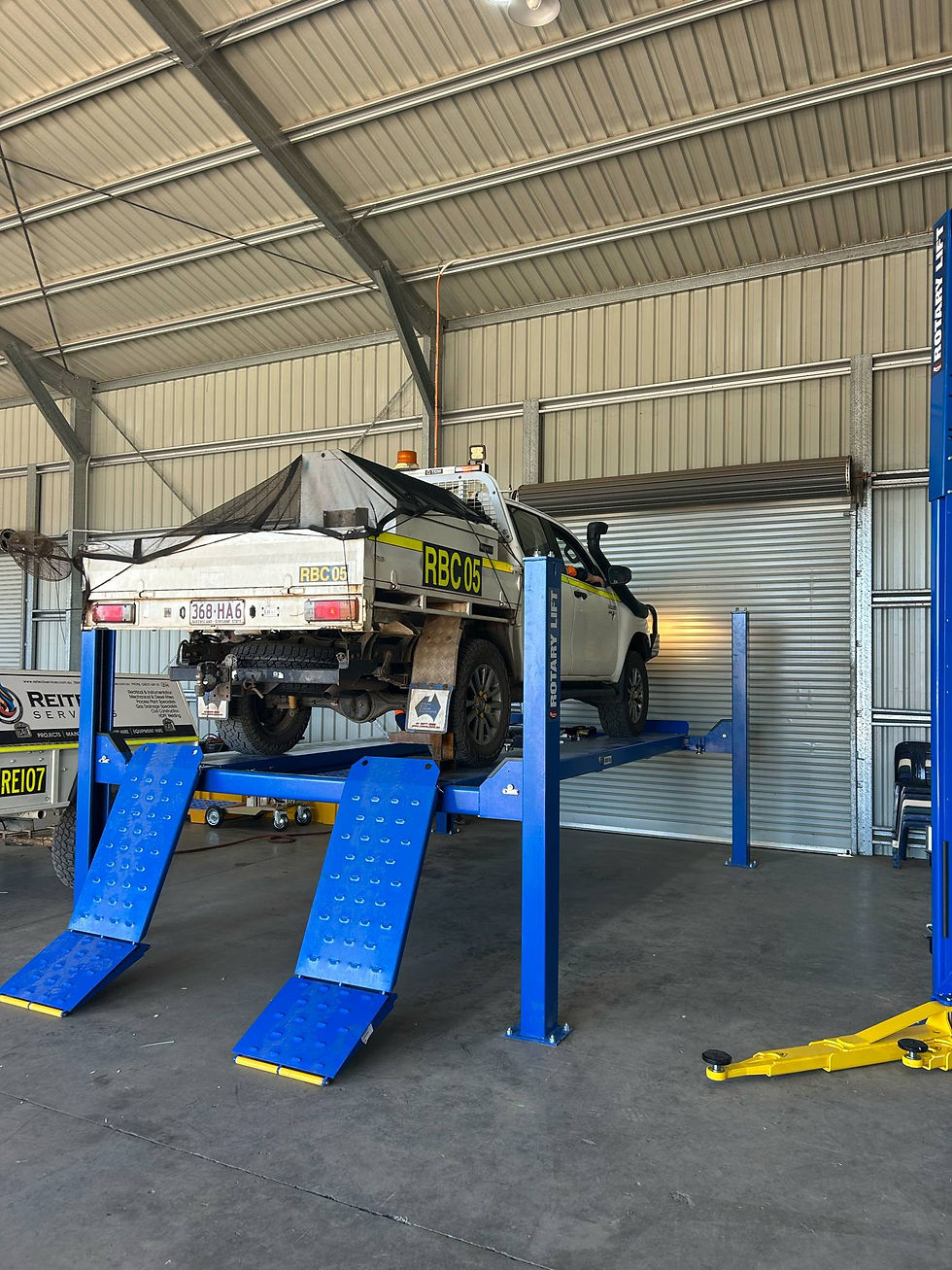- Reitech Team

- Sep 21
- 3 min read
Mining operations in Moranbah are the backbone of the Bowen Basin, one of the world’s richest coal mining regions. Every day, thousands of tonnes of material are moved by heavy machinery, trucks, dozers, loaders, graders, and excavators. These machines are the lifeline of production, and when one breaks down, the ripple effect can cost millions in lost productivity. For companies operating in Moranbah, the difference between staying on schedule or suffering expensive downtime often comes down to one critical factor: access to skilled and reliable diesel mechanics for mining equipment.
As locals ourselves working within the region and hands-on in the field, we know how important well-maintained machinery is to the mining industry. Our team of Moranbah-based diesel mechanics specialises in keeping heavy equipment running at peak efficiency. With expertise that extends across preventative maintenance, urgent breakdown response, and full mechanical overhauls, we provide the local support mining operations need to stay productive and safe.

The Role of Diesel Mechanics in Mining
Mining equipment works harder than almost any other type of machinery. Operating in extreme heat, dust, and heavy loads, components wear down faster than in standard applications. Diesel mechanics are the first line of defence against downtime, ensuring every part of a machine, from hydraulics and engines to brakes and transmissions, is inspected, serviced, and repaired with precision.
In Moranbah, where mining operations run around the clock, a diesel mechanic’s role is not just about fixing machines after they break. It’s about implementing a system of regular maintenance and inspections that minimise the risk of failure in the first place. Our Mechanics and workshop take a proactive approach, offering tailored servicing schedules that suit the demands of mining fleets, keeping machinery safe, reliable, and compliant.
Heavy Equipment We Service
At Reitech, our Moranbah-based mechanical team is equipped to service a wide range of needs, from heavy and light vehicles to earthmoving machinery, stationary plant, and construction equipment. Whether it’s in our dedicated workshop or out in the field, our mobile breakdown units are ready to respond quickly across job sites, roadsides, and remote locations.
We deliver comprehensive services, including engine diagnostics, brake systems, suspension, driveline repairs, and more for both heavy and light-duty vehicles. Our team also specialises in hydraulic servicing; handling system inspections, hose and seal repairs, plus emergency fault responses, and welding/fabrication services for structural modifications, component upgrades, and custom builds. We cover equipment such as excavators, graders, dump trucks, and a variety of plant machinery, all serviced locally or via our mobile units.

Local Knowledge, Local Support
Being based in Moranbah gives our team an edge that non-local service providers can’t offer. Mining companies in the Bowen Basin don’t have time to wait days for a mechanic to arrive from a distant city. When a machine goes down, every hour counts. Our diesel mechanics are on the ground, ready to respond quickly and get equipment back online.
But local support means more than just speed. Our team understands the unique conditions of Moranbah’s mining environment, from the types of equipment most commonly used to the challenges posed by dust, vibration, and long operating hours. This insight allows us to recommend preventative strategies that are realistic and relevant, ensuring equipment is cared for in a way that reflects the actual demands of local mining operations.
Proud to Support the Moranbah Community and Keep it Moving
If your Moranbah operation is looking for skilled diesel mechanics that are only a phone call away and who understand the demands of mining turnaround times and landscapes, we are confident that our Diesel Mechanics can help.
Get in touch with Reitech Mechanical today to arrange servicing, discuss maintenance programs, or request urgent support. Contact Us

